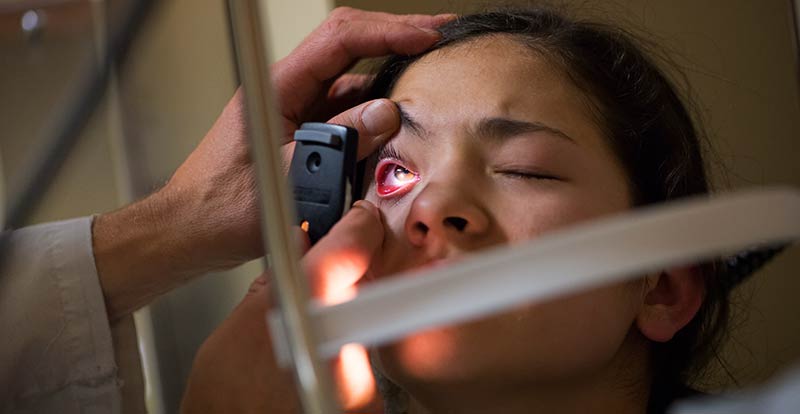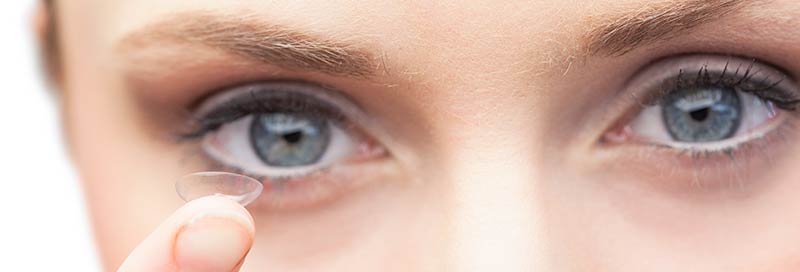Eye Exams

Comprehensive Eye Exam
 A Comprehensive Eye Exam can take an hour or more, depending on the number and complexity of tests required to fully evaluate your vision and the health of your eyes. There are 2 parts to a comprehensive exam. First, we will evaluate your vision and determine what type of correction will meet your needs, to allow comfortable vision throughout the day. Secondly, are your eyes healthy? Is your body healthy? Many diseases that affect your body may be visible in the eyes. High blood pressure, diabetes, high cholesterol and brain tumors are some of these conditions. Here at Dr. C Optometry we use the latest technology to find sight- threatening conditions such as macular degeneration, glaucoma and eye cancers. Eye exams are an important part of keeping you healthy and seeing for many years to come.
A Comprehensive Eye Exam can take an hour or more, depending on the number and complexity of tests required to fully evaluate your vision and the health of your eyes. There are 2 parts to a comprehensive exam. First, we will evaluate your vision and determine what type of correction will meet your needs, to allow comfortable vision throughout the day. Secondly, are your eyes healthy? Is your body healthy? Many diseases that affect your body may be visible in the eyes. High blood pressure, diabetes, high cholesterol and brain tumors are some of these conditions. Here at Dr. C Optometry we use the latest technology to find sight- threatening conditions such as macular degeneration, glaucoma and eye cancers. Eye exams are an important part of keeping you healthy and seeing for many years to come.
Medical Eye Exam
For an Emergency Exam call Dr. C Optometry. If you are not sure if a complaint is an emergency, we will triage it over the phone and give our recommendation. If you call our office after hours you’ll be given the doctor’s cell number. It is better to call and find out it isn’t an emergency than to not call and have the problem worsen. Early intervention and diagnosis lead to better outcomes.

Eye Emergencies include:
 • Eye pain
• Eye pain• Redness or discharge
• Sudden loss of vision
• Something getting onto the eye
• Flashes and Floaters
• Vails or Shadows over part of the vision
• Light sensitivity
Contact Lens Exam
Contact Lens Exams are a separate part of a comprehensive examination and require additional testing. Patients wearing contact lenses require more of the doctor’s time and expertise.

In order to prescribe contact lenses an eye doctor must complete several additional tests:
- Evaluate the health of the eye paying close attention to the cornea, eyelid, and conjunctiva and how contact lens wear will affect the health of the eye.
- Determine the proper contact lens prescription based on each individual patient’s glasses prescription, visual need and corneal health and curvature. A contact lens prescription is different and separate from an eyeglass prescription.
- Examine the contact lens on the eye to ensure proper alignment with the cornea and lids.
- Measure the vision with the contact lenses on the eye and make adjustments as indicated.
There are 3 types of contact lens exams. Which one you will get depends on the type of contact lenses needed, the visual requirements of the patient, and the health of the patient’s eyes:
- An evaluation is for those who are currently wearing contacts and they seem to be working well. We will access the vision and fit and may make minor adjustments to the power.
- Refitting of contacts is for someone who has worn contacts currently or in the past but for various reasons the current contacts are not appropriate for the patient.
- New fitting on contacts is for those who have never worn contacts. The doctor or technician will apply the lenses for you so you can see how comfortable the lenses really are, reducing the fear factor. We will measure your vision and evaluate the fit of the lens before teaching you how to handle the lenses. You will be very comfortable putting in and taking out the lenses before leaving with them. Occasionally a return visit for more training is necessary. Remember we will always be here for extra training and support. We recommend returning a week later to be sure they are performing optimally and to answer any questions you have.